
| Charcot Cove and Orne Harbour |
Charcot Cove |
|
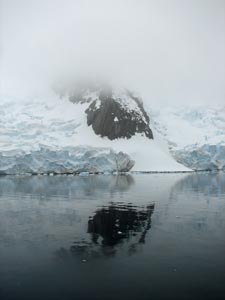 Early morning reflections |
|
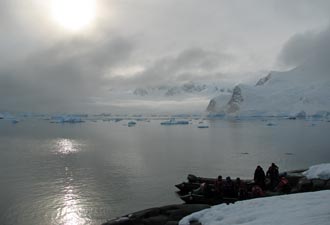 A pale morning sun greets the campsite |
 Zodiac on the way to pick up the campers |
|
|
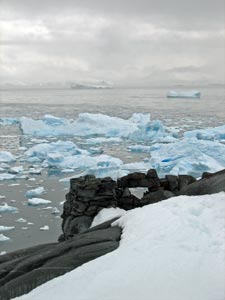 Stone ruins of Charcot's 1912 hut above the cove |
|
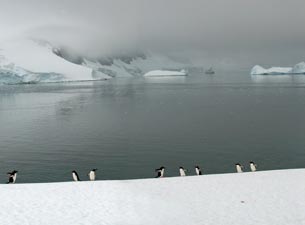 Penguin's eye view from Booth Island back to the ship |
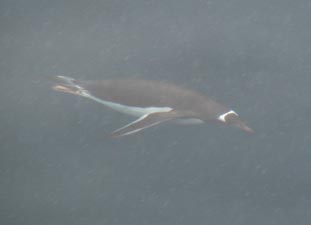 A gentoo streaks by the boat in the crystal clear Antarctic water |
|
|
|
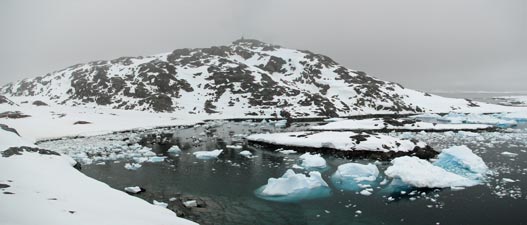 The iceberg-dotted waters of Charcot Cove |
 Icy blue reflections |
|
|
|
|
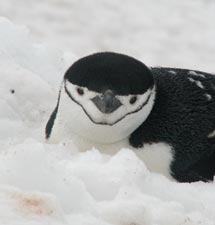 Portrait of a chinstrap |
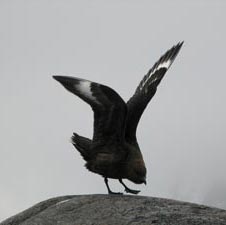 Skua stretching its wings |
||
|
|||
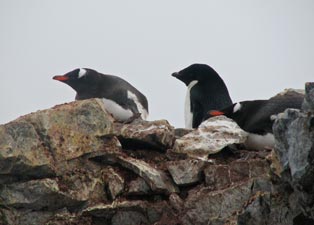 Gentto and adelie penguins sharing a nesting ledge |
|
 A pair of gentoos checking out the egg incubation progress |
 Adelie penguin at its nest site |
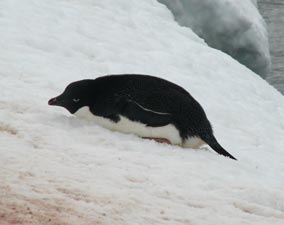 Adelie taking a rest |
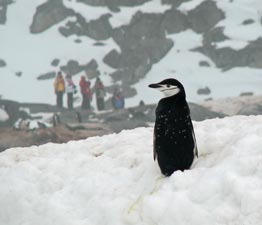 Chinstrap watching people watching chinstrap |
 A squadron of blue-eyed cormorants |
|
 Heading back to the landing site on the western shore of Booth Island |
 |
||
Drifting with icebergs
|
|
|
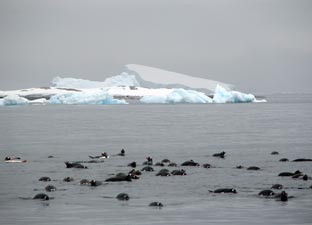 The flotilla of penguins swims by our zodiac |
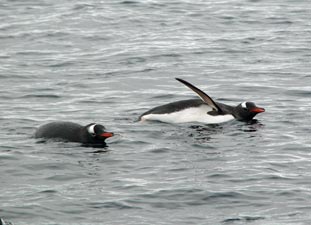 Lazy days in penguin land |
|
|
||
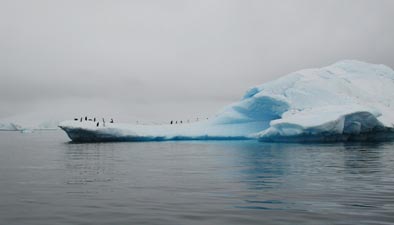 Penguins on their floating home |
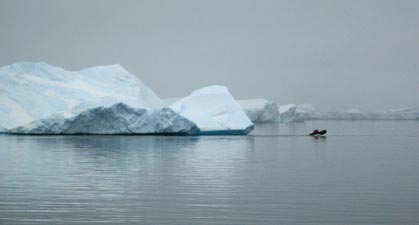 Zodiac heading out to visit the world of floating ice |
|
|
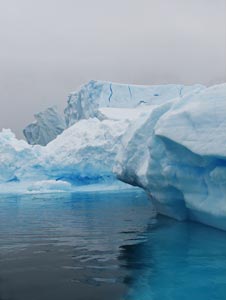 The blueness of ice |
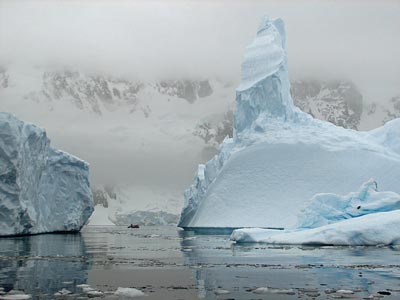 Zodiac dwarfed by the enormous ice sculptures |
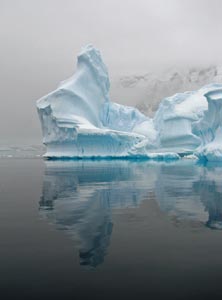 A giant work-of-art X 2 |
|
|
|
 The luminous blue of metamorphosed ice |
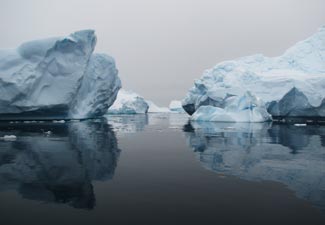 Reflections of blue in the dark mirror of the sea |
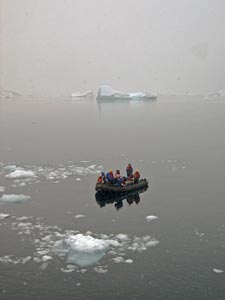 In the stillness of Antarctic seas |
As we headed back to the boat, a gentle snow started to fall; once again we were learning about the vagueries of Antarctic weather. This only added to the bizaare scene that followed of twenty or so passengers jumping into the 4°C water from the ship's boat ramp for the privilege of a 5-second polar plunge to the great amusement and applause of those who watched (which, as we will no doubt later regret, included the fair Nello and myself!).
|
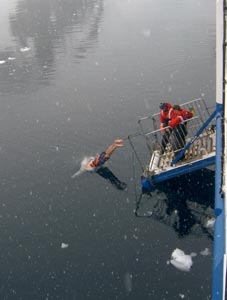 And the snow begins to fall |
Orne Harbour
|
||
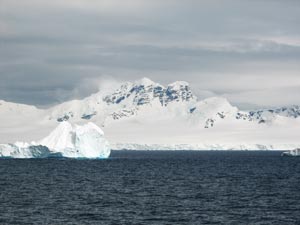 The weather clearing over the mainland |
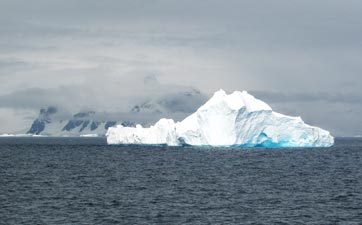 Sun lighting up a big berg in Gerlache Strait |
 Mountains caught between layers of cloud |
|
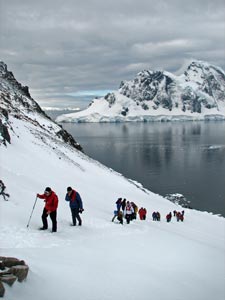 The ascent of Orne Ridge |
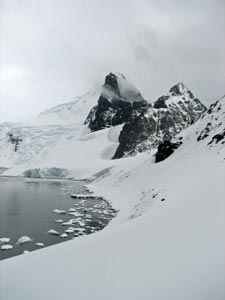 The southern edge of Orne Harbour |
|
|
|
||
 Profile of a chinstrap |
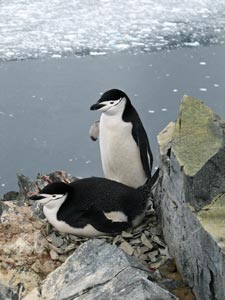 Chinstraps nesting high above the harbour |
||
From here, not only could we see the chinstrap nesting sites, but the views back over the harbour, where the "Ocean Nova" looked like a blue toy boat way below, and southward, over the Gerlache Strait and Ronge Island, were quite incredible in the pale clear light. |
|||
 The climbers heading off up Spigott Peak |
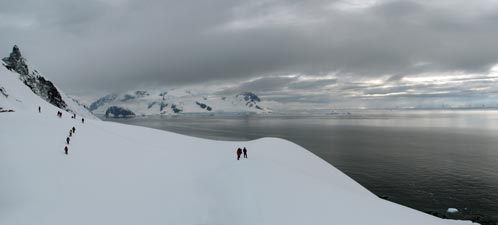 Southern side of Orne Ridge looking out over Ronge Island and the Gerlache Strait |
|
|
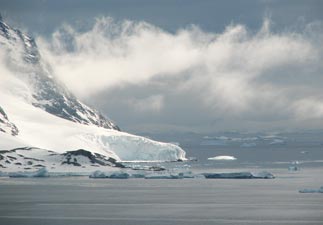 Northern tip of Ronge Island (from Orne Ridge) |
 Cloud rolling down from the interior of the peninsula |
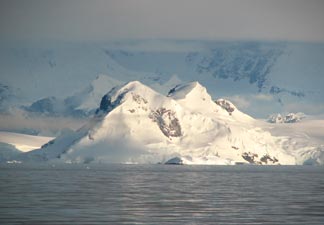 The sun breaks out over the mountains of the Peninsula |
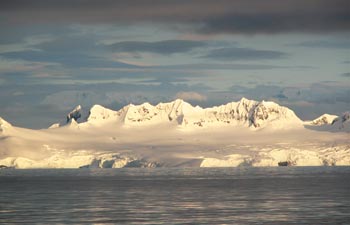 Antarctic Peninsula coastline |
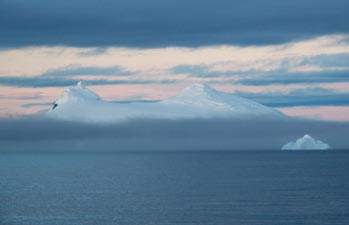 Evening light over Brabant Island |
|
||